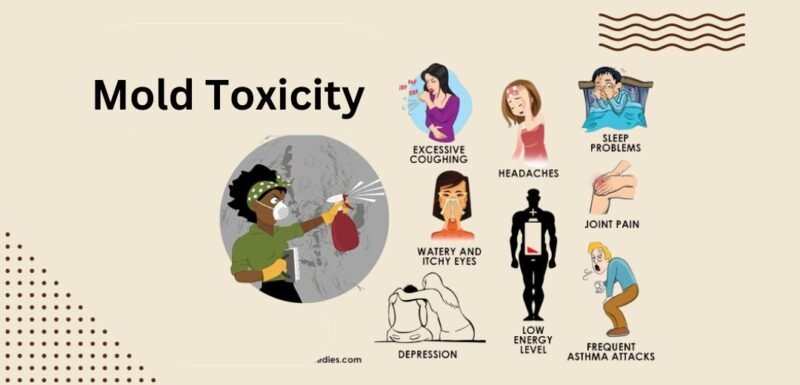Gaining muscle means to get your muscles stronger, bigger, and more defined by adopting activities like lifting weights and doing exercises that challenge your muscles. Eating the right foods is also a key to provide the fuel needed for muscle transformation.
Losing fat is the process of losing excess body fat. This includes changes to your diet, exercising, and adopting a healthier lifestyle. The goal is to burn stored fat, for a more toned and slimmer body. In this process your body burns more calories than it takes in, helping you cut-off that extra weight and feel your best.
This article provides you information about the signs of gaining muscle and losing fat as well as the strategic dietary approaches to attain the signs of gaining muscle and losing fat. To differentiate between the signs of gaining muscle and losing fat, one should notice the visible changes in body appearance. Following are some indicators that can help you distinguish between the two:
Signs of Gaining Muscle, Especially in Terms of Body Measurements or Appearance
1. Enhanced Muscle Size
Observing a noticeable increase in muscle size, particularly in the targeted areas during strength training. For instance, a visible expansion in bicep and hamstring size after consistent bicep curl workouts.
2. Muscular Fullness
Muscles adopting a rounder and fuller appearance, indicating an augmentation in muscle volume. This is exemplified by well-defined and fuller-looking chest muscles following regular chest workouts.
3. Increased Vascularity
The emergence of more visible veins, especially evident during resistance exercises, signifies improved blood circulation. An example would be increased vascularity in the arms during bicep curls.
4. Strength and Performance Advancements
Achieving the ability to lift heavier weights or complete more repetitions showcases enhanced strength. For instance, progressing from lifting 20-pound to 25-pound dumbbells in shoulder presses. Additionally, improvements in athletic performance, such as running faster or achieving a higher vertical jump, contribute to these signs.
5. Muscle Separation
Clear definition and separation become apparent between various muscle groups. This is evident in the distinct separation between the deltoids and triceps during lateral raises.
6. Rounder and Fuller Muscle Appearance
Muscles take on a more rounded and robust appearance, exemplified by well-developed and rounded quadriceps following consistent leg workouts.
7. Changes in Clothing Fit
Clothing may feel tighter, especially around areas experiencing muscle growth. This is manifested in snugger-fitting shirts around the chest and arms.
Signs of Losing Fat, Especially in Terms of Body Measurements or Appearance
1. Diminished Body Measurements:
A distinct reduction in physical dimensions, including waist circumference, hip size, arms, chest, and thigh measurements, signifies targeted fat loss efforts. This contributes to a sculpted and streamlined physique.
2. Alterations in Clothing Fit:
Evident fat loss manifests through looser-fitting garments, prompting adjustments like tightening belts or looking for smaller sizes. This shift in garments reflects a decrease in overall body size, highlighting successful efforts in losing excess body fat.
3. Visible Alterations in Muscle Definition:
Fat loss enhances muscle definition, revealing a sculpted and toned appearance as excess body fat diminishes. Marked changes in muscle definition, particularly in areas like the abdomen and arms, result from reduced fat covering underlying musculature, emphasising the success of targeted fat loss efforts.
4. Reduction in Body Fat Percentage:
Losing fat leads to a decreased body fat percentage, showcasing a more favorable ratio of lean muscle mass to total body weight. Measured through methods like skinfold calipers or DEXA scans, this reduction signifies a shift toward a leaner and healthier body composition, a key indicator of successful fat loss efforts.
5. Improved Facial Definition:
Successful fat loss enhances jawline definition, as reduced facial fat reveals sharper contours and a more defined profile. This visual change accentuates facial features, contributing to a leaner appearance—a satisfying outcome of targeted fat loss efforts.
6. Heightened Vascularity:
Reduced body fat brings veins into visual prominence, especially in areas like the arms and legs. This vascular visibility indicates lowered subcutaneous fat levels, emphasizing improved muscle definition.
7. Overall Transformation in Appearance:
Fat loss results in noticeable changes, fostering a leaner, sculpted physique. The reduction in body fat enhances muscle definition, creating a toned and athletic look. These visual transformations not only signify successful fat loss but also reflect improved health and well-being.
What role does diet play in achieving both the signs of gaining muscle and losing fat?
1. Gaining Muscle
a. Caloric Surplus:
A caloric surplus is pivotal for gaining muscle, establishing an environment where the body receives more calories than it expends. This surplus provides the necessary energy in muscle gaining and repair during intensive resistance training. When combined with a strategic workout regimen, a caloric surplus ensures an abundance of nutrients, fueling the anabolic processes crucial for building lean muscle mass.
b. Protein Intake:
Adequate protein intake is mandatory for gaining muscle as it supports muscle protein synthesis, a critical process for building and repairing muscle tissue. Incorporating protein-rich foods into daily meals provides essential amino acids for optimal muscle gaining. Prioritizing protein intake alongside resistance training fosters a positive nitrogen balance, facilitating muscle gain.
2. Losing fat
a. Caloric Deficit:
A calorie deficit is essential for losing fat, as the body expends more calories than it consumes, prompting the utilization of stored fat for energy. This establishes a metabolic environment conducive to burning excess body fat while preserving lean muscle mass. A well-managed calorie deficit, complemented by a balanced diet and regular exercise, promotes sustainable and effective fat loss.
b. Balanced Macronutrients:
A balanced intake of macronutrients is crucial for optimal nutrition, ensuring a harmonious consumption of proteins, carbohydrates, and fats. This nutritional equilibrium supports overall health, providing essential building blocks for various bodily functions. Incorporating a mix of lean proteins, whole grains, and healthy fats in meals reflects a well-rounded approach, fostering sustained energy and well-being.
3. Role of Hydration in appearance of signs of gaining muscle and losing fat:
Adequate hydration is vital for the appearance of signs of gaining muscle and losing fat, playing a crucial role in various physiological processes. Sufficient water intake supports muscle function, optimizing performance during strength training for effective signs of gaining muscle and losing fat. Additionally, staying well-hydrated aids in appetite control during fat loss, promoting overall health and supporting the body’s metabolic processes.
Advantages of fiber intake for signs of gaining muscle and losing fat:
Optimal fibre intake is advantageous for improving signs of gaining muscle and losing fat, contributing to overall health and wellness. Fibre-rich foods aid in digestion and nutrient absorption, supporting the efficient utilization of nutrients for muscle development. Furthermore, high-fibre diets promote satiety during the process of losing fat, assisting in weight management and maintaining a calorie-controlled approach for effective fat reduction.
| TAKE AWAY NUGGETS | |
| Adequate amount of water required to stay healthy for: | Protein rich food: |
| · Men: 3.7 liters (15.5 cups daily) · Women: 2.9 liters (11.8 cups daily) | Meat, Chicken, Eggs, Pasta, Fish Vegetables like spinach (Palak,Saag)Lentils (Dal) and Tofu |
| TAKE AWAY NUGGETS |
| High Fibre Diet: |
| Fruits: Apple, Banana Vegetables: Broccoli, Brussels sprouts, carrots, spinach, kale. Legumes: Lentils, chickpeas, black beans, kidney beans. Whole Grains: Quinoa, brown rice, oats, barley, whole wheat products and Seeds: Almonds, chia seeds, flaxseeds, sunflower seeds. Root Vegetables: Sweet potatoes, beets, turnips.High-Fibre Snacks: Popcorn, nuts and seeds, vegetable. |
Conclusion
In the pursuit of signs of gaining muscle and losing fat, the journey goes beyond the physical aspects. It involves adopting a mindset that values overall well-being, consistency, and a balanced approach to fitness. By recognizing the signs of gaining muscle and losing fat, addressing challenges, and embracing a holistic lifestyle, individuals can unlock the full potential of their health and vitality.
FAQs:
Q1. Can I follow a fitness routine if I have a busy schedule?
Ans: Yes, incorporating short, intense workouts and making small dietary adjustments can be effective for those with busy lifestyles.
Q2. How important is rest and recovery in achieving the signs of gaining muscle and losing fat?
Ans: Rest and recovery are crucial for muscle repair and overall well-being. Overtraining can hinder progress, so adequate rest is essential.
Q3. Are supplements necessary for bringing remarkable changes in the body to identify the signs of gaining muscle and losing fat, or can they be achieved through a natural diet?
Ans: While supplements can aid in reaching fitness goals, a balanced and nutrient-rich diet should be the foundation of any fitness plan.
Q4. Can age affect the rate of gaining muscle and losing fat?
Ans: Yes, age can influence the rate at which the body builds muscle and loses fat. However, adopting a healthy lifestyle remains beneficial at any age.
Q5. Is it possible to enjoy the fitness journey rather than seeing it as a chore?
Ans: Absolutely! Finding activities that bring joy and satisfaction turns the fitness journey into an enjoyable lifestyle.



